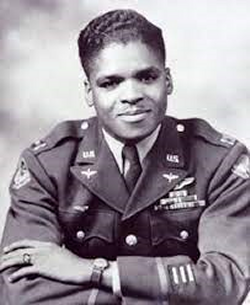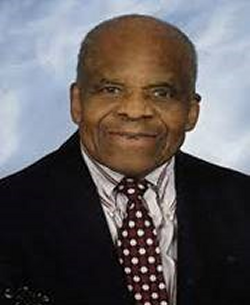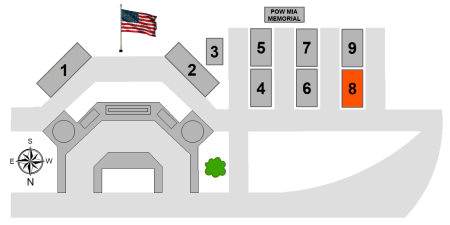Luther H Smith
Captain USAF
WWII / POW


Captain Luther Smith became a WWII hero and an aerospace engineer who made significant advances in aviation. Luther was introduced to flying at the age of 13 while riding in a Ford Tri-Motor. In 1942, at the age of 21, Smith dropped out of the University of Iowa and became the first African-American from Iowa accepted in the U.S. Army Air Corps. Along with 275 other African American pilots, Smith completed nine months of aviator training in May 1943 and was commissioned at Tuskegee Airfield in Alabama.
During WWII he flew 133 successful missions as a member of the Tuskegee Airmen, destroying two enemy aircraft in the air and another 10 on the ground. On an escort mission over Hungary in October, 1944, his P-51 was severely damaged during a bombing of an oil tank freight yard. When the plane’s engine burst into flames, Luther knew he had to parachute out, but he became trapped in the cockpit. Subconsciously he pulled the parachute’s rip-cord which jerked him from the plane. He crashed through trees in the landing, fractured his hip and came to rest on a tree branch. German soldiers freed him from the tree and transported him to a military hospital in a Yugoslavian village. Eventually he was transferred to a German POW camp in Austria. When he was released from the camp at the end of the war, he weighed only 70 pounds. For the next two years, he was hospitalized and endured 18 operations. He retired from active military service in 1947 as a Captain. He was awarded the Distinguished Flying Cross, Air Medal with six Oak Leaf Clusters, Purple Heart, eight European and Mediterranean Theaters Campaign Ribbons, and the Prisoner of War Medal.
After his honorable discharge, he returned to the University of Iowa and earned an engineering degree. Despite his distinguished war record and academic achievements, Smith suffered through dozens of job interviews before he was finally hired by General Electric, where he spent 37 years working as an aerospace engineer. He held two U.S. patents for dynamic sealing devises in aircraft, published numerous technical documents and publications, and worked on special assignments with the U.S. Air Force, NASA, and U.S. Navy Submarine Command.
Locator
